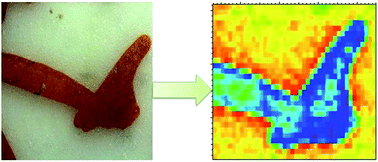The compositional characterization and painting technique of Chinese red and white porcelain by EDXRF and SR-μXRF mapping analysis
Abstract
Red and white porcelain was representative of high quality Chinese technology in a historical context. Red and white porcelain sherds excavated from the Mansion of Prince Qin were selected to study their compositional characteristics and painting techniques. EDXRF results indicate that the glazes are of a lime alkali composition and all of them are homogeneous in composition. SR-μXRF mapping analysis revealed that the writing and the painting used different processes. The “Suo” character was written with red pigment directly onto the ceramic and the painted pattern involved two steps. The first step was to paint the outline of the patterns and the second step was to complete the coloring for the patterns. The special painting technique was popular in the Ming dynasty, particularly in the imperial kiln. This study indicated that the SR-μXRF mapping analysis was a useful method to research the painting process of ancient porcelains. The results help us to understand what were the techniques used in porcelain production in the imperial kiln of the Ming dynasty of China.



 Please wait while we load your content...
Please wait while we load your content...